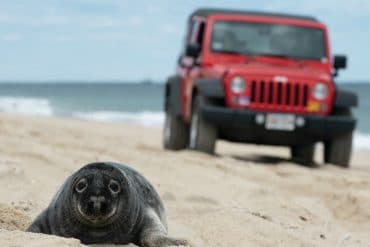Chip Webster has been waiting a lifetime to see the great American eclipse this August.
On August 21st at 2:38.03 p.m., Chip Webster will be shin-deep in the shoals of a South Carolina creek, head tipped back, special glasses on, staring at the sky. With a little bit of luck and a clear sky, for the next two and a half minutes Webster and millions of others in the “path of totality” of the 2017 solar eclipse will see the sky go dark. A black orb — the shadow of the moon — will be rimmed by an undulating, fiery ring, the only visible part of the sun. Stars and planets might emerge in the daytime sky as birds and other wildlife fall eerily silent. Webster has attended upwards of a dozen eclipses on nearly every continent, a record held by a select few eclipse chasers.
 A seventeenth-generation descendant of Tristram Coffin, Webster grew up in Mississippi, but spent summers at his grandparents’ home on Nantucket. A self-described nerd in high school, Webster was the son of a businessman and an art teacher, the kid with the telescope in his bedroom bound for the Massachusetts Institute of Technology. Yet Webster’s passion for eclipses, which began in 1991 when he joined friends on a spur-of-the-moment, 12,000-mile road trip from Mississippi to Baja, Mexico, via Canada, is more than scientific. Webster believes the power of an eclipse can approach the religious or the spiritual. For instance, at an Easter Island eclipse in 2010, Webster witnessed a monsoon abruptly stop, clouds part, and a double rainbow appear. The eclipse happened, and then there was another spectacular double rainbow. The clouds then closed like a curtain, and it rained for days.
A seventeenth-generation descendant of Tristram Coffin, Webster grew up in Mississippi, but spent summers at his grandparents’ home on Nantucket. A self-described nerd in high school, Webster was the son of a businessman and an art teacher, the kid with the telescope in his bedroom bound for the Massachusetts Institute of Technology. Yet Webster’s passion for eclipses, which began in 1991 when he joined friends on a spur-of-the-moment, 12,000-mile road trip from Mississippi to Baja, Mexico, via Canada, is more than scientific. Webster believes the power of an eclipse can approach the religious or the spiritual. For instance, at an Easter Island eclipse in 2010, Webster witnessed a monsoon abruptly stop, clouds part, and a double rainbow appear. The eclipse happened, and then there was another spectacular double rainbow. The clouds then closed like a curtain, and it rained for days.
Then there are the exotic viewing sites: Madagascar, the Faroe Islands, Peru, a remote part of Indonesia, the Australian Outback. Total solar eclipses, in which the moon completely obscures the sun, draw aficionados like Webster who happily trek to far-flung locales under sometimes dicey circumstances to witness them firsthand. Antarctica is the only continent where Webster hasn’t witnessed an eclipse. And that’s in the works.
In Webster’s airy architectural firm on Amelia Drive, we pore over global charts of the paths of eclipse shadows. The eclipse chaser’s holy grail — the total eclipses — are depicted in purple. Webster traces a purple band with his finger. “You could be anywhere along this path and see the total eclipse. However, a lot of these are over water, or they’re in places that are probably going to be cloudy.” You don’t want to travel all the way around the world for a two-minute event and miss it because of an errant cloud.
 This year’s pilgrimage is almost too simple: a culmination of events as unlikely as three planets perfectly aligning. When Webster was in his twenties, shortly before his eclipse-chasing days, he envisioned creating a place where he and a close-knit group of friends from high school and college — being pulled in different directions by family and careers — could reconnect. “A custom retirement community, a place for our children to grow up and get to know each other,” he said, although he didn’t mention retirement back then. “An Adirondack camp sort of thing.”
This year’s pilgrimage is almost too simple: a culmination of events as unlikely as three planets perfectly aligning. When Webster was in his twenties, shortly before his eclipse-chasing days, he envisioned creating a place where he and a close-knit group of friends from high school and college — being pulled in different directions by family and careers — could reconnect. “A custom retirement community, a place for our children to grow up and get to know each other,” he said, although he didn’t mention retirement back then. “An Adirondack camp sort of thing.”
The only spot in the US that met Webster’s exacting criteria turned out to be south of Greenville, South Carolina, in a tiny town identified on a map as Avalon. The island paradise of Celtic myth and Arthurian legend, Avalon struck Webster as the perfect name, although he never again saw the town identified that way and couldn’t find the original map. Almost thirty friends bought two hundred acres, and in the ensuing decades, more joined. The friends’ growing families, including Webster’s own daughter, who is now twenty-eight, helped realize his utopian vision: The Big Chill ten times over.
Webster learned that for the first time in ninety-nine years, a total solar eclipse will sweep the US from coast to coast. The Great American Eclipse will be partial for most of the country, including Nantucket. Its path of totality is narrow — picture a thirty-mile-diameter shadow originating over Oregon, traveling across the continent at the speed of sound — passing directly over Avalon.
 “Just as a convergence of things led us to this property, now we are getting this bonus of the eclipse,” Webster exclaims. The South Carolina property encompasses a large field, where Webster anticipates that many of the owners and invitees (“relatively small, four hundred people or so”) will camp out and watch. Nearby is the sizable creek where shoals form a shallow waterfall that leads to a cove. As many as two million eclipse viewers are expected to descend on South Carolina, but one spot — the shoals that happen to align perfectly with the eclipse’s path — will host only a handful of viewers, Webster among them. What if the weather gods frown upon him and all the others hoping for front-row seats to this century’s sun-and-moon magic show? Webster already has his sights set on the next total eclipse visible in the continental US in 2024, best viewed in Mexico, the country where he saw his first.
“Just as a convergence of things led us to this property, now we are getting this bonus of the eclipse,” Webster exclaims. The South Carolina property encompasses a large field, where Webster anticipates that many of the owners and invitees (“relatively small, four hundred people or so”) will camp out and watch. Nearby is the sizable creek where shoals form a shallow waterfall that leads to a cove. As many as two million eclipse viewers are expected to descend on South Carolina, but one spot — the shoals that happen to align perfectly with the eclipse’s path — will host only a handful of viewers, Webster among them. What if the weather gods frown upon him and all the others hoping for front-row seats to this century’s sun-and-moon magic show? Webster already has his sights set on the next total eclipse visible in the continental US in 2024, best viewed in Mexico, the country where he saw his first.






